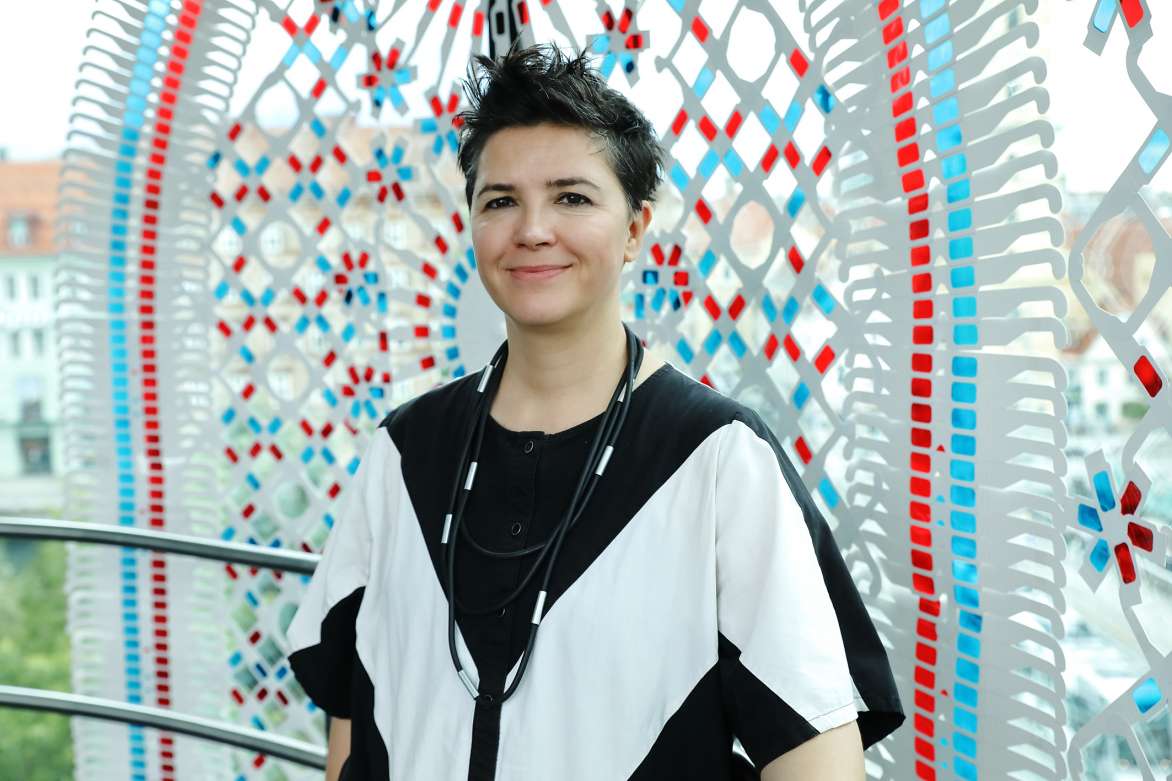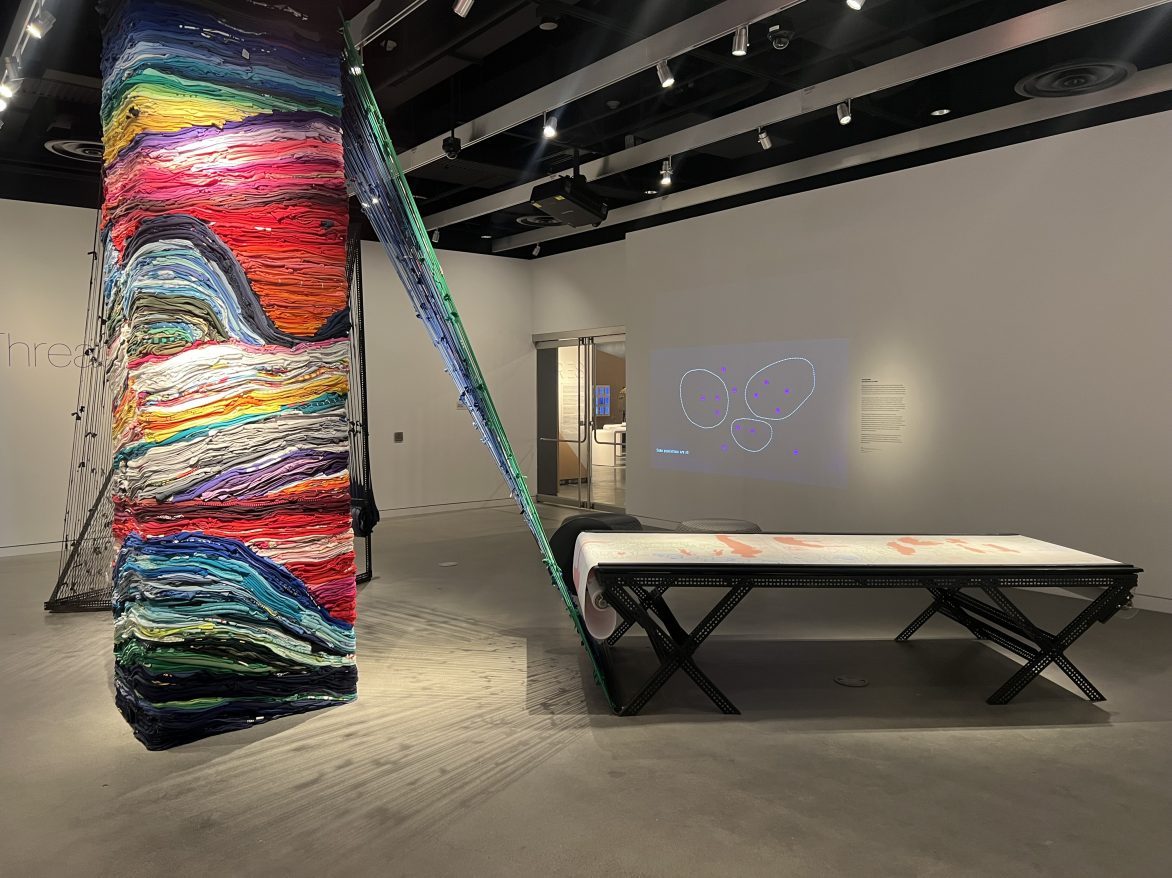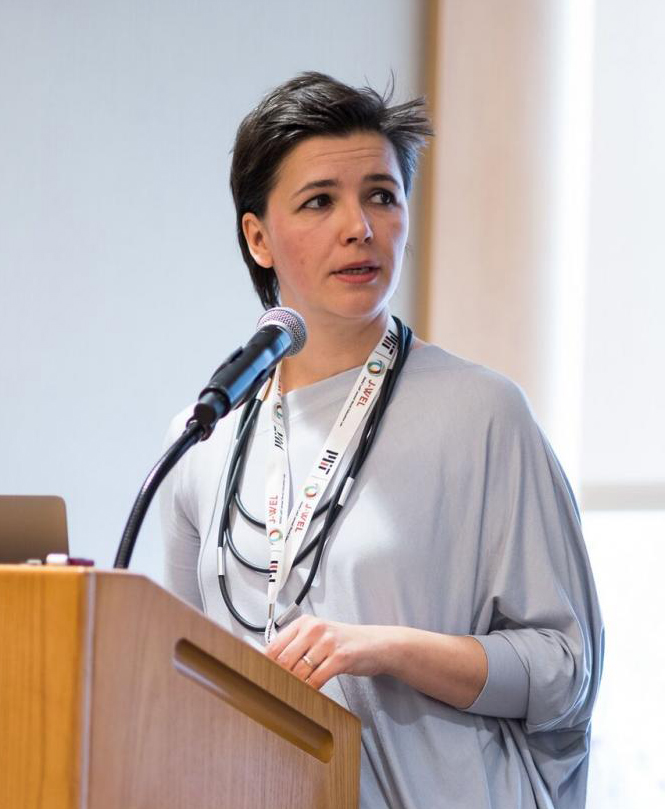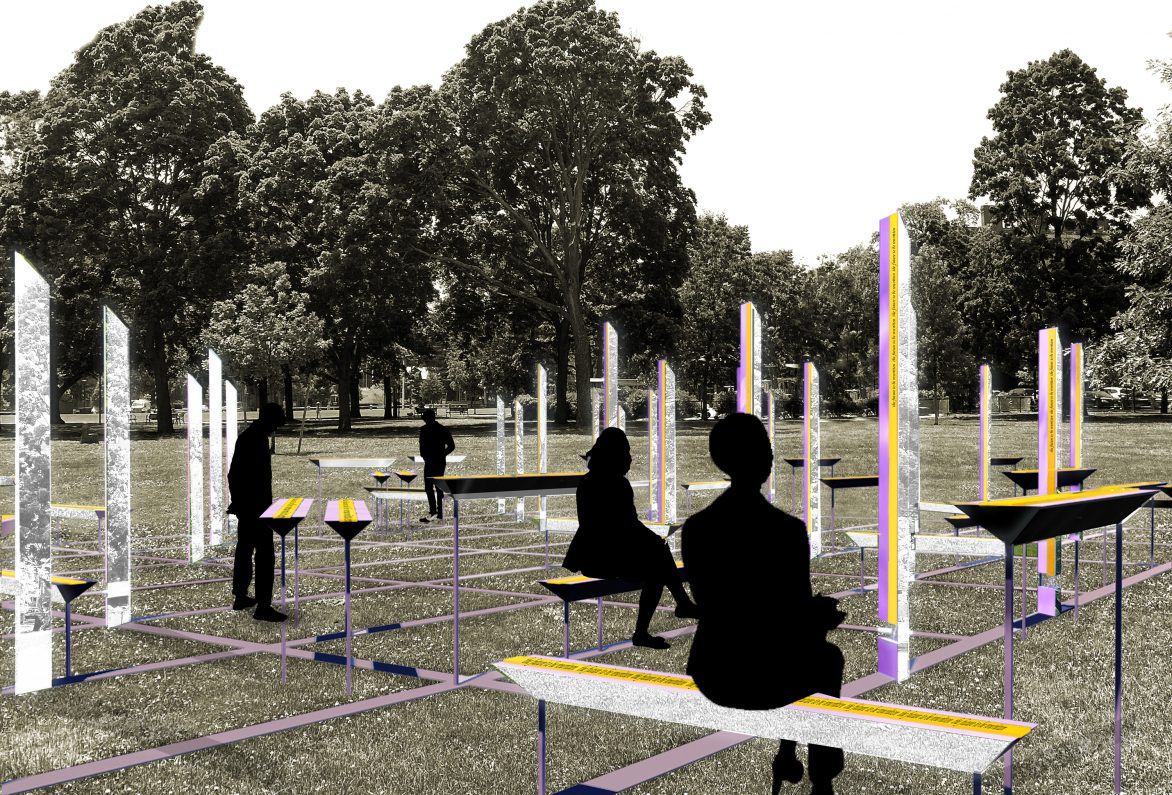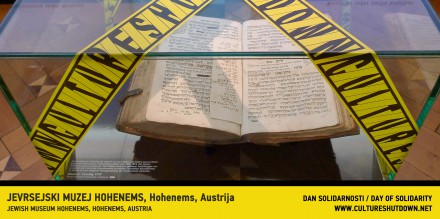ACT professor, artist, and architectural historian, Azra Akšamija, explores the future mission of a national museum in post-national societies, envisioning it as a site in which we can begin to reclaim the lost notion of public virtue in her second artist book, Museum Solidarity Lobby. This artist book is published by the Museum of Modern Art Ljubljana and produced with the support of the ERSTE Foundation, the <rotor> Center for contemporary Art Graz and the Austrian Federal Government.
Museum Solidarity Lobby – Book Synopsis
This crisis of cultural institutions in the Balkans has caught the attention of artist and architectural historian Azra Aksamija. She works through an artistic lens to address the crisis of Bosnia’s cultural institutions within the context of the socio-political transformation processes that have traversed and remade post-Socialist Eastern Europe. In particular, she is working with the question of whether a national museum can be a vehicle to reclaim things like solidarity, collective memory, the integrity of public institutions–an opportunity for cultural renewal in post-national societies. Five projects documented in Museum Solidarity Lobby artist book offer “lobbying” as an artistic strategy in socially and politically engaged practice aimed at reclaiming the museum for its constituents, making it a site which can begin to recover the lost notion of public virtue.
The book is motivated by the recent museum crisis in post-war Bosnia, which led Aksamija to co-initiate the international platform CULTURESHUTDOWN. The platform aims at uncovering the political causes and raising international awareness regarding the closing down of the National Museum in Sarajevo. Her project, Museum Solidarity Day (2013), pointed to a global concern: the state’s inability and unwillingness to fund culture in the neo-liberal era. By “crossing off” museum artifacts with yellow barricade tape, Aksamija used the tape as a negation tactic. Her work was twofold: she created an international network of concerned cultural institutions and individuals and designed the format and the tools for a global solidarity action. This work is a key example of her role as a provocateur in the public sphere that relies on her capabilities as a designer to mobilize visual images in the urban context. Museum Solidarity Day reverberated globally: more than 390 museums and galleries worldwide answered her call for participation, including museums from the former enemies, Serbia and Croatia. This project gained the support of ICOM and CIMAM, both major international umbrella organizations for museums, and received significant media coverage in venues such as The Guardian and Al Jazeera. This project was shown on museum facades in Sarajevo (2013-14) and in numerous international exhibitions, including the Museum of Contemporary Art Metelkova, Ljubljana (2014).
The ways in which cultural institutions are affected by politics and power is of interest to different artist groups across the world. In this context, Aksamija’s book relates to the work of other ACT faculty, such as Urbonas Studio’s pro-test lab, which devised tools to address the post-socialist privatization of cultural spaces in Lithuania. Also, there have been many artist-led protests against the exploitation of migrant workers in the Guggenheim Abu Dhabi by the Gulf Labor Artist Coalition and the G.U.L.F. Aksamija positions the political agency of her work within the potent exchanges with the audience that result from activist-charged art in the public space, while remaining fully conscious of Claire Bishop’s criticism of equating democracy in society with democracy in art. The Museum Solidarity Day is exemplary in being political art that defends art. The project triggered real change by altering public opinion through aesthetic affect, which subsequently inspired activists’ work in the legal realm. Ultimately, the multi-annual collective alliance of artists and activists succeeded in making the Bosnian government back down and provide support for the country’s cultural institutions. The National Museum in Sarajevo reopened in 2015.
The artist book Museum Solidarity Lobby (MSL), which includes a foreword by the art historian Philip Ursprung, Designated Dean of the ETH Zurich Department of Architecture, links the museum shutdown in Bosnia to the larger questions about the future of national institutions in the context of global capitalism. Aksamija seeks artistic means against the destruction and commodification of cultural heritage. In the projects Digesting Dayton (2012-17) and Future Heritage Collection (2013-14), she probes the idea of decolonization of history by questioning what is framed as “national” and as “heritage.”
These inquiries link with the work of Hans Haacke, whose recent work explored the post-1989 crisis of national space. MSL references the legacy of institutional critique and its recent reassessments, following Andrea Fraser in asking what kinds of institutions are needed today. Aksamija sees the fusion of institutional critique with relational aesthetics (which was the platform of New Institutionalism in the arts) as being an ultimately faulty mechanism for addressing the totality of the attack on the global cultural sphere and on the art itself, since it was too cautious in questioning the way cultural institutions are funded and too art world-oriented to consider the human right to culture. MSL asks: If we have, in fact, a right to culture, what type of institution must be established to secure that we keep that right in the future?
Unlike institutional critique in the West, Aksamija’s critical position emerges from the significantly different socio-political conditions of Eastern Europe, where artistic practices were historically directed at developing better functioning art institutions. As curator Zdenka Badovinac notes, the cooperation between artists and institutions was of crucial importance to the survival of art in times of political instability. This legacy continues in the work of contemporary artists in the region, such as IRWIN, Tadej Pogačar, Jusuf Hadžifejzović, and Damir Nikšić.
MSL projects have achieved international recognition through exhibitions at the Dallas Holocaust Museum, the Moderna galerija, Ljubljana, the Museum of Contemporary Art, Belgrade, and the International Theater Festival MESS, Sarajevo. The book includes essays by CULTURESHUTDOWN board members, art historians Maximilian Hartmuth and Asja Mandić, and political scientist Jasmin Mujanović. Interviews with historians Mark DeLancey and Patrick Salland, human rights expert Rick Halperin, and curator Zdenka Badovinac give insights into the specific meaning of cultural heritage and the relationship between the personal and collective dimensions of cultural memory.
Ljubljana, 2018. Iteration 800. Hardcover, 302 pages, 6” x 9.”


